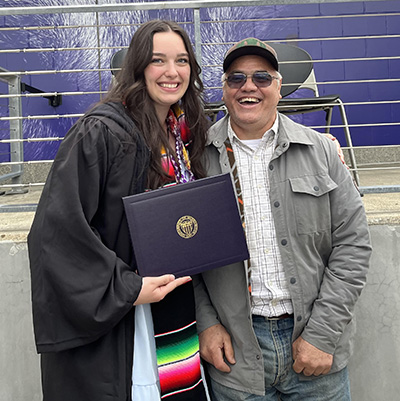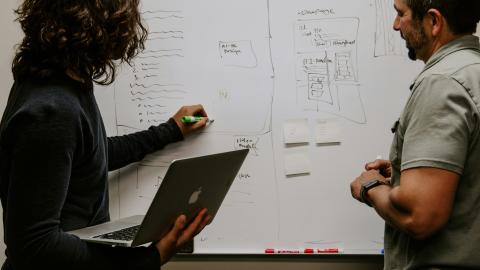
Belen Salguero, MS Applied Environmental Health and Sciences student, shares her experience working with Casa Latina, a Seattle non-profit supporting the Latino community.
I was born and raised in Morton Washington, a small rural town near Mt. Rainier whose local economy is primarily supported by lumber mills. I completed my undergraduate degree at the University of Washington where I initially wanted to study biology. After taking my first environmental health class, I was hooked and decided to study environmental and occupational health.
My dad, an immigrant from Guatemala, has worked in the lumber mills my entire life. This fact, in conjunction with concepts I have learned while taking occupational health classes offered by the department, led to a blossoming passion of ensuring people like him have access to safe and healthy work environments. I am a firm believer that every person, regardless of where they come from, has the right to feel safe and taken care of in their workspace.
Supporting Casa Latina’s efforts to train workers
I am collaborating with Diana Ceballos and Nancy Simcox on a Northwest Center for Occupational Health and Safety (NWCOHS) Professional Training Opportunities Project (PTOP) with Casa Latina. Casa Latina helps local Latinx community members obtain jobs and offers classes to teach them about safety and their rights as workers. To align with the Casa Latina mission, we are working to help them create an OSHA 10 Training Program in Construction. The 10-hour OSHA in construction training program is for entry level workers and covers hazard identification, controls and prevention, and worker rights. Having an OSHA 10 card may make these community members more appealing to employers, furthering their ability to obtain work while also informing them of their rights while at the workplace. Notably, Eddie Kasner teaches courses at UW which offer the same opportunity to students! Thanks to him and Rick Gleason, I personally have a 30-hour OSHA card for both general and construction OSHA and a 10-hour card for general industry.
Developing new training materials
Currently, Casa Latina has a series of PowerPoint slides and related activities to teach safety concepts for a construction OSHA 10 program. However, their current material does not encompass all topics required for this accreditation. We worked to identify topics that needed bolstering as well as on identifying alternative methods of instruction that did not rely on reading from PowerPoint slides since, as previously mentioned, we wanted to make this training comprehensive to those with low literacy.
Specifically, we focused on the following guiding questions:
- What topics are required for a construction OSHA 10 training program?
- What are effective survey methods that can be implemented to learn about satisfaction and knowledge retention among low-literacy populations?
- What are methods for teaching low literacy learners?
- What are methods for teaching sole Spanish speakers?
So far, we have identified other methods of instruction, such as story-telling, interactive group activities, and photo/video identification, as proven tools useful in teaching low-literacy populations. We recently finished going through Casa Latina’s training materials to identify areas of improvement. We will now begin working on strengthening topics that do not currently meet the requirements.
I have been researching the literature to figure out how, once we establish the new educational course, we can conduct surveys to learn about how the training material was received. I also looked into alternative methods of instruction and combed through current construction OSHA 10 training materials to see how Casa Latina’s material compared. Most recently, I compiled all of Casa Latina’s training PowerPoint slides into one presentation and inserted “outline” slides which helped to identify which parts of the content could be used to teach each of the required topics for construction OSHA 10 as well as identified times at which it would be appropriate to switch from the presentation to a group activity. Through this I identified topics which are required for an OSHA 10 Construction program that needed to be supplemented and began brainstorming content which could be included to achieve this goal.
Reflections on the experience
I am so incredibly grateful that Diana has given me the opportunity to work on this project with her. I could go on forever, but she genuinely is one of the most kind, considerate, intelligent, and ambitious people I have ever had the pleasure of knowing. She makes me feel like there is no goal out of my reach and goes out of her way to do quite literally anything she can to further my success. Her passion for working with organizations like Casa Latina to better the community is truly unmatched. Through this project, she has taught me the importance of utilizing soft skills to effectively collaborate with community members. I genuinely do not know how she is able to balance all the intense projects she works on, but her hard work, determination, and comforting kindness have continued to inspire me. If I was to gain anything from working on this project with her, it is the hope that one day I may be half the woman she is.




